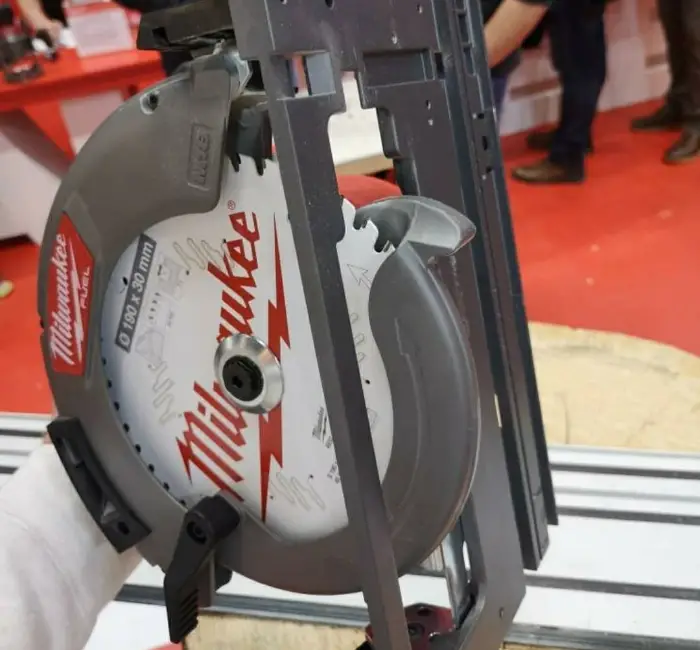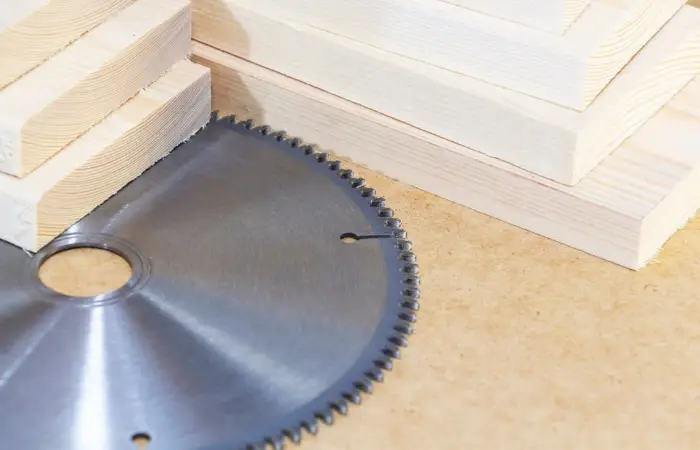You’re trying to cut a piece of wood, but you don’t have the right size blade for your saw. It can be frustrating when you don’t have the right tools for the job. Not only is it hard to get the job done properly, but it can also be dangerous.
In this article, we will discuss can a smaller blade be used on a circular saw? Many people ask this question and there is no straightforward answer. It depends on the type of saw you are using, the size of the blade, and what you are trying to cut.
In addition, we will discuss all of these factors so that you can make an informed decision about whether or not to use a smaller blade on your circular saw.
When should you use a smaller blade on your circular saw?
Now that you know how to choose the right blade for your saw, you can make a decision about whether or not to use a smaller blade. There are a few situations where it might be appropriate to use a smaller blade.
- For hand saw – If you are using a hand saw, it might be easier to control the saw with a smaller blade.
- To cut small wood – If you are trying to cut a small piece of wood, a smaller blade might be easier to maneuver.
- To make a precise cut – For a precise cut, a smaller blade is often the better choice because it can provide more control.
When should you not use a smaller blade on your circular saw?
There are also a few situations where you should not use a smaller blade.

- For power saw – If you are using a power saw, a smaller blade can cause the saw to overheat and potentially damage the saw.
- To cut large wood – Large wood can be more difficult to cut with a smaller blade. It is often best to use a larger blade so that you can make a clean, straight cut.
- To make a rough cut – If you are trying to make a rough cut, a larger blade will be more effective. Smaller blades can often get stuck in the wood and cause the saw to bind.
Circumstances when using a smaller blade on your saw are dangerous.
- The saw is not powerful enough for the blade size
- When Blade is not the right size for the material.
- The operator does not have enough experience.
- When the saw is not properly maintained
How to safely use a smaller blade on your saw?
If you decide to use a smaller blade on your saw, there are a few things you need to do to make sure you do it safely.
- Properly installed: The first thing you need to do is make sure the blade is properly installed. If the blade is not properly installed, it can cause the saw to kick back.
- Check the tension: Tension is important for any saw, but it is especially important for a saw with a smaller blade. If the tension is too loose, the blade can come off the saw. If the tension is too tight, the blade can break.
- Use the right blade: Compatibility of the blade with the saw is necessary. Using the wrong blade can cause the saw to overheat.
- Follow the manufacturer’s instructions: The next thing you need to do is follow the manufacturer’s instructions. If you don’t follow the manufacturer’s instructions, it can void the warranty.
- Be prepared for kickback: Kickback is a dangerous condition that can occur when the blade binds to the material. If the saw kicks back, it can cause serious injury. So, be prepared for it by being aware of what can cause it and how to avoid it.
- Wear proper safety gear: Finally, you need to wear proper safety gear. This includes eye protection, gloves, and closed-toe shoes.
How to choose the right blade for your saw?

- TYPE
The first thing you need to do is identify the type of saw you are using. There are three main types of saws: hand saws, power saws, and cordless saws.
Hand saws are the most common type of saw. They come in a variety of sizes and can be used for a variety of tasks. Power saws are more powerful than hand saws and are typically used for larger projects. Cordless saws are becoming more popular because they offer the convenience of being able to move around without being tethered to a power outlet.
- SIZE
The next thing you need to do is identify the size of the blade. Blades come in a variety of sizes, but the most common are 4, 5, and 6 inches. The size of the blade you need will depend on the type of saw you are using and what you are trying to cut.
- PURPOSE
Finally, you need to identify what you are trying to cut. Different blades are designed for different materials. For example, there are blades designed specifically for cutting through metal or concrete. So, if you are trying to cut something other than wood, make sure you get the right blade for the job.
Conclusion:
Smaller blades can be more difficult to control, so it is important to be aware of the potential dangers before you use one. If you do decide to use a smaller blade, make sure you take the proper safety precautions. Further, always consult the manufacturer’s instructions to be sure you are using the saw correctly.
In the guide, we have mentioned the reasons why and when you should use a smaller blade on your circular saw. Also, we discussed some safety measures for protection purposes. We hope that you enjoyed this informative blog. If you have any queries regarding saws in general, please feel free to contact us. Our team would be happy to assist you!

I am William Anderson and I’m the founder of this website. I started this site because I was tired of dealing with the problems that come with using Saw Tools. I wanted to help others avoid the time and frustration I had, So I started this site based on my own experience and what I’ve learned from other professionals and resources.